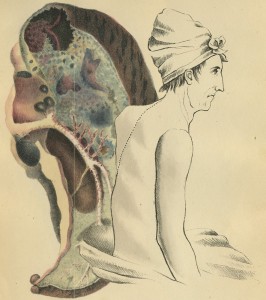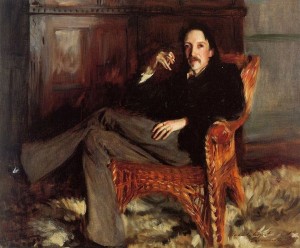
What does Stephen Crane have in common with Catullus, Molière, John Keats, all six Brontë siblings, Henry David Thoreau, Robert Louis Stevenson, Paul Laurence Dunbar, Anton Chekhov and Katherine Mansfield? Besides the fact that they were all writers… they all died of tuberculosis.
Tuberculosis is commonly associated with writers and other artists—see also Frederic Chopin, Aubrey Beardsley, Vivien Leigh—and, by extension, the bohemian life. You know, picturesque garrets, the back-streets of Paris, quaint taverns and the avant-garde cabarets where young talent congregates…
Sorry, that’s the myth of tuberculosis—a romantic decline and a beautiful death. You’ve probably been exposed to this myth: consumption, as it came to be known, for the “wasting away” of the sufferer’s body, has been celebrated, er, depicted in operas like La Bohème and La Traviata, in novels like La Dame aux Camelias (and the many theatrical productions and films made of it) and The Magic Mountain, and in paintings like John Singer Sargent’s portrait of a pale Robert Louis Stevenson. In this construction of tuberculosis, the illness was associated with spirituality and creativity—a “white death” that afflicted the young and innocent, that purified its victims of former sins, that gave them a brilliance susceptible to inspiration.
 Why the past tense? That’s another feature of the myth of TB: that it is largely a disease of the past. In reality, tuberculosis is on the rise in the twenty-first century worldwide. And the ways it is spread and experienced are far from transcendent. (Perhaps you’ve been following NPR’s series of stories about contemporary TB.)
Why the past tense? That’s another feature of the myth of TB: that it is largely a disease of the past. In reality, tuberculosis is on the rise in the twenty-first century worldwide. And the ways it is spread and experienced are far from transcendent. (Perhaps you’ve been following NPR’s series of stories about contemporary TB.)
The fascinating history of tuberculosis—the myth and the reality—will be explored in a free public conversation, Consumption’s Long Shadow: Literature, Science, and Tuberculosis, at the George Peabody Library on Wednesday, June 12, at 6 pm. Yes, free! But do please RSVP so we know how many snacks to make for the reception. You can also do so via Facebook.
Four panelists will talk about tuberculosis as a feature of the literary imagination and as a scientific fact: its impact on writers, its history in Baltimore, and the array of treatments that have been brought to the fight against this ferocious killer. Yours truly will assess the role of TB in the life of Stephen Crane, whose work is on view in the Peabody gallery, in the exhibition For Love or Money: Art, Commerce, and Stephen Crane. Professor Juliette  Wells of Goucher College will investigate the attractions of TB as a metaphor for Victorian writers in “The Tell-tale Cough.” Dr. Richard Chaisson, director of the Johns Hopkins Center for Tuberculosis Research, will discuss the real-life context of the disease in the nineteenth century, the work of Hopkins’ own Dr. William Osler, and Baltimore’s pioneering public health measures in “Tuberculosis, Art and Poverty.” Finally, in “Therapeutic Revolutions Revisited,” Dr. Jeremy Greene from the history of medicine will re-evaluate the role of pharmaceuticals in TB treatment in the twentieth century—and in the current pandemic.
Wells of Goucher College will investigate the attractions of TB as a metaphor for Victorian writers in “The Tell-tale Cough.” Dr. Richard Chaisson, director of the Johns Hopkins Center for Tuberculosis Research, will discuss the real-life context of the disease in the nineteenth century, the work of Hopkins’ own Dr. William Osler, and Baltimore’s pioneering public health measures in “Tuberculosis, Art and Poverty.” Finally, in “Therapeutic Revolutions Revisited,” Dr. Jeremy Greene from the history of medicine will re-evaluate the role of pharmaceuticals in TB treatment in the twentieth century—and in the current pandemic.
Bring your curiosity—no face mask required. And we promise, you’re still allowed to sing along with Mimi and Rodolfo as she dies.

Sidney Lanier was another author who died from TB.